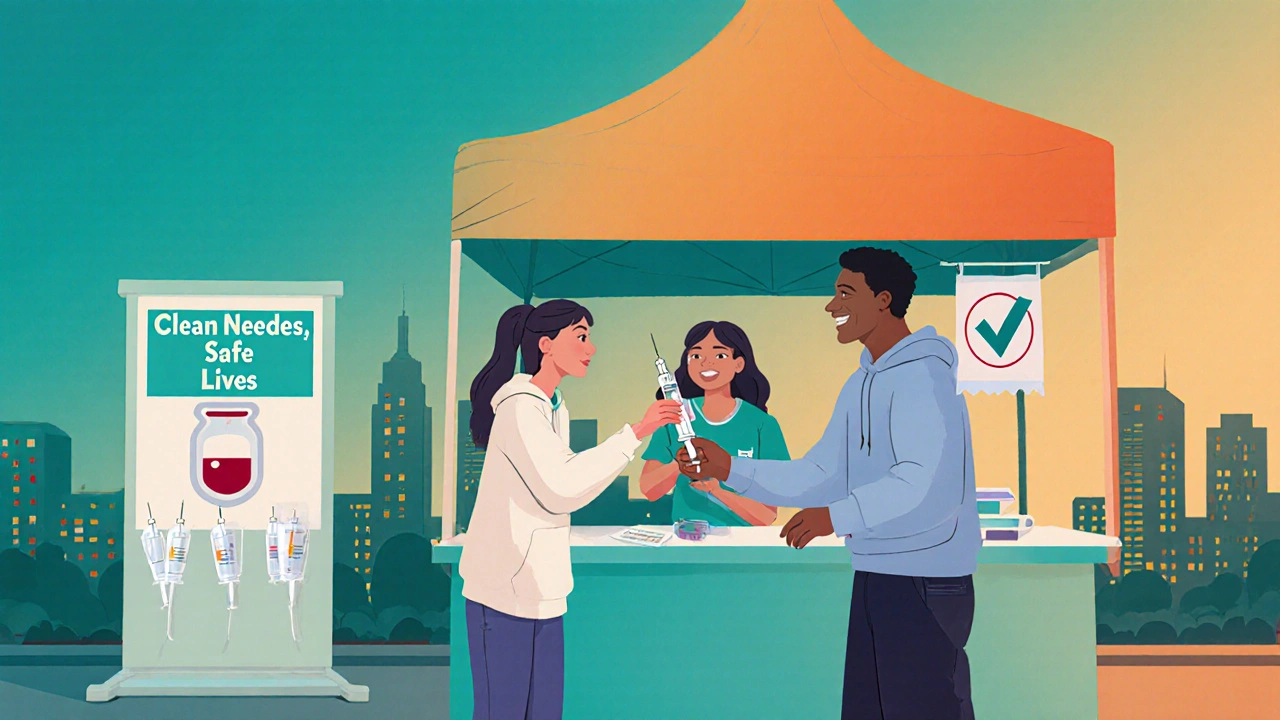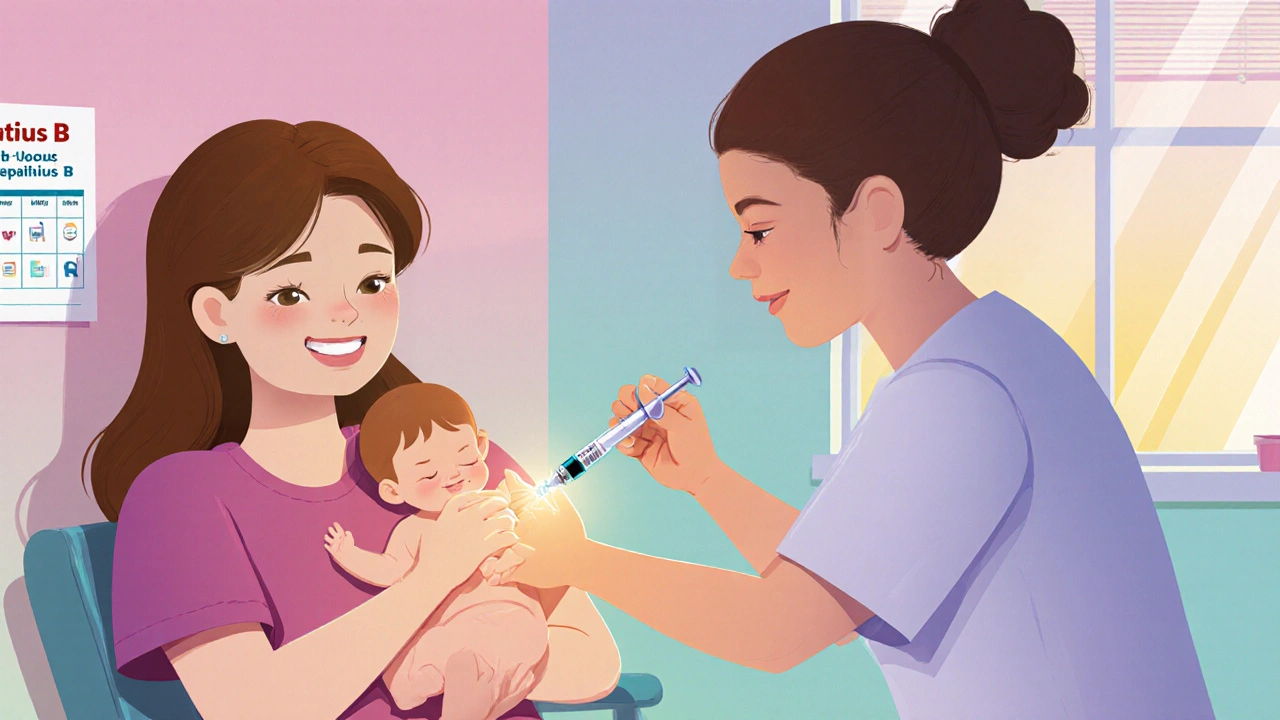Hepatitis B Transmission Risk Calculator
Personal Risk Assessment
Enter your situation to calculate your hepatitis B transmission risk based on WHO guidelines.
When it comes to chronic hepatitis b, stopping the spread is as important as treating the disease itself. Across the globe, millions live with the virus, yet many new infections could be avoided with the right mix of public‑health moves and personal habits. This guide walks you through the most effective ways to block hepatitis B transmission, from birth‑right vaccines to safe‑needle programs, and shows how individuals and communities can play their part.
What is Chronic Hepatitis B and How Does It Spread?
Chronic Hepatitis B is a long‑lasting infection caused by the hepatitis B virus (HBV), which attacks the liver and can lead to cirrhosis or liver cancer if left unchecked. The virus is highly contagious, moving from person to person through blood, sexual fluids, or from mother to child during birth. Understanding the main routes helps us target prevention precisely.
- Blood‑borne exposure - sharing needles, unsafe medical procedures, or transfusions with infected blood.
- Sexual contact - unprotected sex with an infected partner.
- Perinatal transmission - mother‑to‑baby during delivery.
Each pathway demands a tailored strategy, and the good news is that science already offers proven tools for every route.
Strategy 1: Universal Newborn Vaccination and Perinatal Prophylaxis
Vaccination is the cornerstone of hepatitis B control. The World Health Organization (WHO) recommends a birth‑dose vaccine within 24 hours of life, followed by two or three booster shots.
Vaccination provides active immunity by prompting the body to produce protective antibodies against HBV. In countries with high coverage, infant infection rates have plummeted by more than 80 %.For babies born to HBV‑positive mothers, the protocol adds hepatitis B immunoglobulin (HBIG) and antiviral therapy in the third trimester, slashing mother‑to‑child transmission from 90 % to under 5 %.
Strategy 2: Ensuring Blood Safety and Safe Injection Practices
Blood transfusions and invasive medical procedures are potential hot spots for HBV spread if proper screening is missed.
Blood Screening tests donated blood for HBV surface antigen (HBsAg) and viral DNA before it reaches patients. Modern nucleic‑acid testing catches even low‑level infections, making the risk negligible in well‑regulated systems.For injections, the rule is simple: use a new, sterile needle every time. Re‑using or sharing syringes is the fastest way to jump from one carrier to another.
Health facilities worldwide have adopted single‑use devices, but enforcement varies. Training staff, auditing supply chains, and marking every syringe with a unique identifier are practical steps to close gaps.
Strategy 3: Harm‑Reduction Programs for People Who Inject Drugs (PWID)
People who inject drugs account for a sizable share of new HBV cases in many regions. Needle‑exchange programs (NEPs) and opioid‑substitution therapy (OST) form a proven defensive line.
Harm Reduction delivers clean needles, safe disposal containers, and counseling without demanding abstinence. Studies in Australia, the United States, and Europe show NEPs reduce HBV incidence by 30‑50 % when combined with regular testing and vaccination.Integrating vaccination into NEP services turns a contact point into a prevention hub, catching people who might otherwise slip through the health‑care net.

Strategy 4: Safe Sexual Practices and Partner Testing
Sexual transmission accounts for roughly a third of new adult HBV infections. Consistent condom use cuts the risk by more than 70 %.
Condom Use creates a physical barrier that blocks HBV‑laden fluids during intercourse. Pair this with regular screening for both partners, especially in high‑prevalence settings, and you have a powerful shield.Healthcare providers should offer HBV testing as part of routine STI panels, and discuss vaccination with anyone who tests negative.
Strategy 5: Antiviral Treatment for Infected Individuals
Treating chronic carriers isn’t just about protecting their liver; it also reduces the amount of virus they shed, lowering transmission odds.
Antiviral Therapy uses drugs like tenofovir or entecavir to suppress HBV DNA to undetectable levels. When viral load drops below 200 IU/mL, the chance of passing HBV to a sexual partner or newborn drops dramatically.Guidelines recommend starting treatment for patients with high viral loads, liver inflammation, or cirrhosis. Regular monitoring ensures the virus stays suppressed.
Strategy 6: Public‑Health Policies and WHO Guidelines
All the tactics above work best under a strong policy umbrella.
WHO Guidelines outline a three‑pillar approach: vaccination, safe injection, and treatment of infected persons. Countries that adopt the full suite see national HBV incidence fall from 5 % to under 1 % within a decade.Key policy actions include:
- Funding universal birth‑dose vaccines and ensuring cold‑chain logistics.
- Mandating HBV screening for all blood donations and high‑risk medical procedures.
- Legalizing and subsidizing needle‑exchange and OST services.
- Integrating HBV testing into sexual health clinics and prenatal care.
- Providing affordable antiviral drugs through public health schemes.
Quick Checklist: What You Can Do Today
- Get vaccinated if you haven’t received the full HBV series.
- Pregnant women: ask your doctor about HBV testing and antiviral prophylaxis.
- If you inject drugs, use a clean needle every time; visit a local NEP.
- Practice consistent condom use and encourage partners to test.
- If diagnosed with chronic HBV, discuss antiviral treatment with your clinician.
- Support policies that fund vaccination and safe‑injection programs.
Comparison of Major Prevention Strategies
| Strategy | Primary Target | Typical Effectiveness* | Key Implementation Steps |
|---|---|---|---|
| Universal newborn vaccination + HBIG | Infants of HBV‑positive mothers | >95 % reduction in perinatal transmission | Administer birth‑dose within 24 h; give HBIG + second/third doses at 1‑6 months. |
| Safe injection & blood screening | Healthcare settings, blood donors | ≈99 % safety when protocols followed | Single‑use needles, nucleic‑acid testing of blood, staff training. |
| Needle‑exchange & OST | People who inject drugs | 30‑50 % incidence drop | Provide clean syringes, counseling, on‑site vaccination. |
| Condom use & partner testing | Sexually active adults | ≈70 % reduction in sexual transmission | Distribute condoms, integrate HBV testing into STI services. |
| Antiviral therapy for carriers | Diagnosed chronic HBV patients | Transmission risk drops >80 % when viral load suppressed | Prescribe tenofovir/entecavir, monitor viral load regularly. |
*Effectiveness figures are drawn from WHO reports and peer‑reviewed studies up to 2024.
Frequently Asked Questions
Can adults still benefit from the hepatitis B vaccine?
Absolutely. Unvaccinated adults who are at risk - such as healthcare workers, people who inject drugs, or those with multiple sexual partners - should receive the three‑dose series. It provides >90 % protection against infection.
How quickly does a newborn need the hepatitis B vaccine after birth?
The first dose should be given within the first 24 hours of life. Delaying beyond 48 hours significantly raises the chance of perinatal transmission.
Is it safe to receive the hepatitis B vaccine if I already have chronic HBV?
Vaccinating someone who already carries HBV doesn’t provide additional protection, but it’s safe. The focus should shift to antiviral treatment and regular monitoring.
What is the role of antiviral therapy in preventing transmission?
Effective antivirals suppress HBV DNA to undetectable levels, which greatly reduces the virus in blood and semen. This lowers the risk of sexual or perinatal spread by over 80 %.
Do needle‑exchange programs really work?
Yes. Data from the Australian Injectors Study and European Harm‑Reduction Networks show a 30‑50 % drop in new HBV infections where NEPs operate alongside vaccination services.
How often should sexually active people get screened for hepatitis B?
If you’re in a high‑risk group, an annual test for HBsAg and anti‑HBs is advisable. Otherwise, testing every 3‑5 years or when starting a new partnership works well.
Are there any side effects of the hepatitis B vaccine?
Side effects are mild - usually soreness at the injection site or a low‑grade fever. Serious reactions are extremely rare, making it one of the safest vaccines available.
Preventing chronic hepatitis B transmission isn’t a single‑shot effort; it’s a mix of vaccine coverage, safe‑practice policies, and treatment for those already infected. By combining these strategies-whether you’re a parent, a healthcare worker, or a policy maker-you can help drive the virus toward extinction.




Leo Chan on 19 October 2025, AT 13:37 PM
Hepatitis B may feel like a giant roadblock, but we have the tools to flatten it.
Universal newborn vaccination alone has slashed perinatal transmission by over 95 %.
Pair that with timely birth‑dose administration, and we’re already winning early battles.
Safe injection practices in clinics protect millions of patients each year.
Needle‑exchange programs turn a risky moment into a chance for vaccination.
Consistent condom use adds another barrier that cuts sexual spread dramatically.
Antiviral therapy not only safeguards the liver but also keeps the virus from hopping to others.
Public‑health policies act like the scaffolding that holds all these measures together.
When governments fund cold‑chain logistics, the vaccine reaches remote villages reliably.
When hospitals audit their supply chains, a single‑use syringe becomes the norm.
When communities rally around harm‑reduction, stigma fades and participation rises.
The WHO’s three‑pillar strategy is a blueprint that many nations have already followed with success.
If you’re a caregiver, insisting on screened blood is a simple but powerful act.
If you’re a parent, checking that your newborn gets the birth‑dose within 24 hours can save a lifetime.
If you’re an adult at risk, completing the three‑dose series gives you >90 % protection.
Together, these steps form a safety net that can catch the virus before it spreads further.